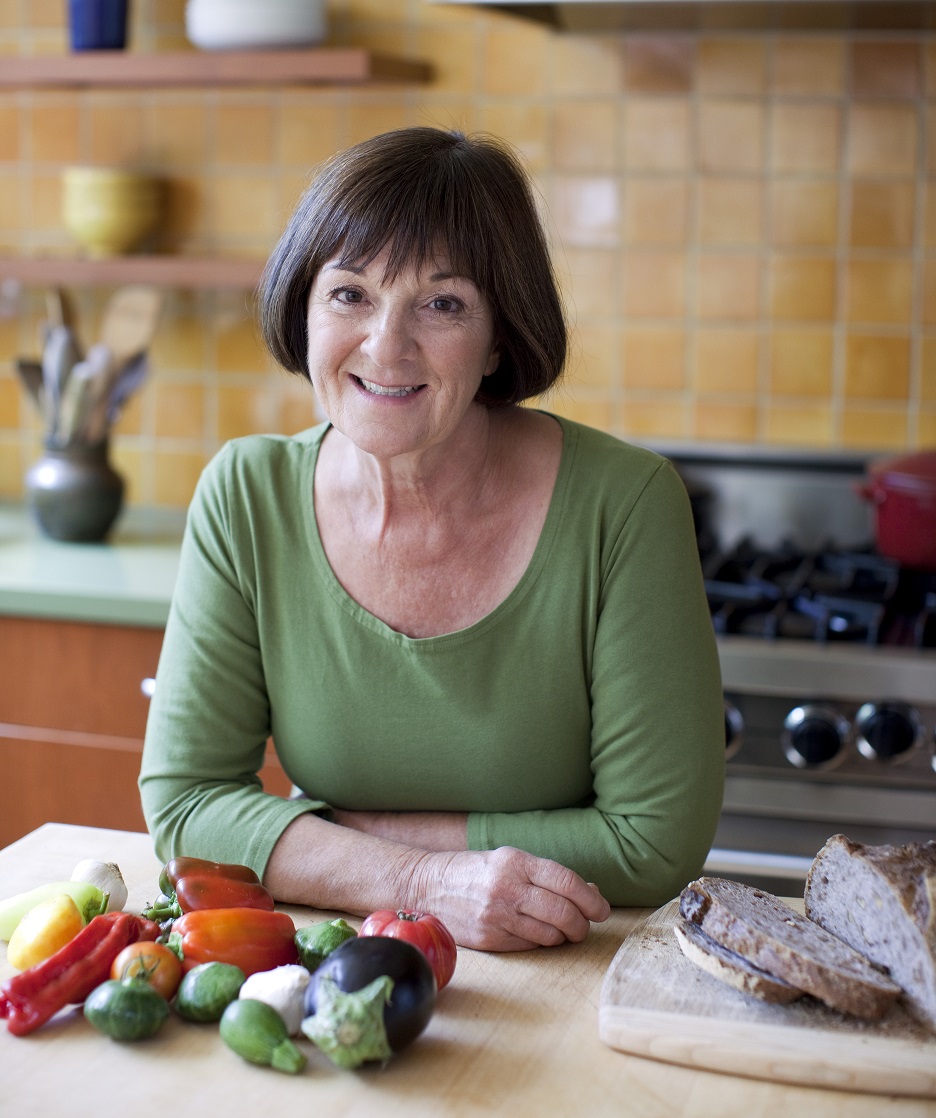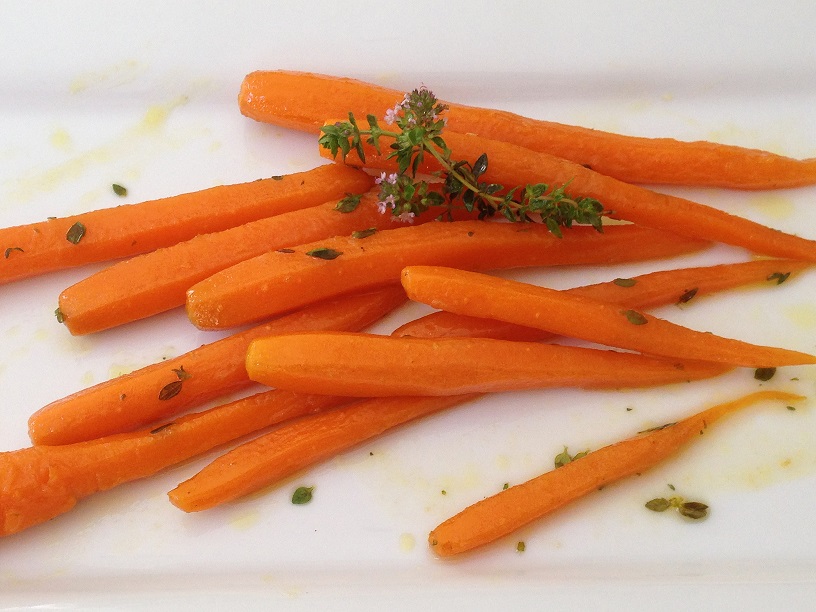A Honey of a Cookbook
 Monday, June 16, 2014 at 4:00AM
Monday, June 16, 2014 at 4:00AM  Marie Simmons, photo by Luca Trovato
Marie Simmons, photo by Luca Trovato
By Sandy Hu
The latest from Inside Special Fork
As soon as I got off the phone with Marie Simmons, I headed to the kitchen, made a slice of toast, slathered it with butter and drizzled it with honey. The rich and creamy butter melted and merged with the mellow sweetness of the honey…and rekindled a childhood taste memory.
I confess I’m not much of a honey user. There’s no particular reason; I just don’t think of it. We always buy lavender honey when vacationing in Provence and Lehua honey when in Hawaii. And the rest of the time, we always have some kind of honey at home, but it often sits on the shelf until a recipe I’m making actually calls for this natural sweetener.
My interest in honey was triggered when I was invited to an education panel in San Francisco recently, hosted by the National Honey Board, at which Marie, an award-winning food writer and the author of Taste of Honey, c. 2013, (Andrews McMeel Publishing), was speaking. Delighted to be seeing an old friend again, I called Marie for a preview.
“I’ve loved honey since I was a kid in New York State,” Marie recalls. “I put honey on everything. I used to put heavy cream and honey on oatmeal. One of my flavor memories is of honey and melted butter on toast.“
Growing up in Hawaii, an ocean and a continent apart from Marie, I shared that same flavor memory, which compelled me into the kitchen to make the toast.
There’s so much to learn about honey, and Marie covers it all in her book. How do the different varieties taste? Which to buy? How to use honey? What are its health benefits? How do bees make honey? A honey tasting guide and recipes from breakfast, to main dishes, to side dishes, to sweets, will round out your knowledge as you peruse this beautiful and definitive book.
Through the years of an illustrious career, Marie maintained her interest in honey and kept “a big fat file of clippings, recipes and a selection of books,” she said. One of her older gems was a book by Sue Hubbell, who lived in the Ozarks on a 100-acre honey-producing farm, called A Book of Bees: And How to Keep Them.
Bees, Magnificent Machines
By the time she began writing the book, Marie was completely fascinated by bees. “They’re magnificent little machines,” she marvels. “I did a lot of research and encouraged John (her husband) to read about beekeeping. Sue Hubbell said, ‘Beekeeping is farming for intellectuals.’ It allows you to get into a subject really deeply. I kept saying to John that he should read more about bees. He studied all winter and we now have two bee hives!
“Bees are not making honey for us to eat,” Marie points out. “They are feeding the hive, which is a thriving metropolis. We get the excess. The bees work hard to keep the colony thriving. When they bring nectar in, they beat their wings, going a mile a minute, to evaporate the nectar into honey, while at the same time, cooling the hive in the heat of summer and keeping it warm in the winter. The ideal temperature for the hive is the low 90s. The bees feed the queen and the larvae. It’s a very complex process. The bees only live up to five weeks so they have to be replenished constantly.”
The Culinary Advantages of Honey
“In the culinary sense, honey is fabulous sweetness,” Marie says. “We are all looking for more natural ingredients and honey makes sense to me – not just in baking, but for savory dishes. We all know honey mustard; but experiment using honey with vinegar and lemon juice in a salad dressing, in a stir fry, or in tomato sauce to round out flavors. Think honey with garlic and pepper, with soy sauce, and honey with cheese.
“Honey in chocolate desserts was almost an epiphany for me – in chocolate pudding, brownies; panna cotta. Different varietals, such as lavender or orange blossom, change the flavor note. Varietals are really fun,” she says enthusiastically.
To find where to buy honey varietals, go to the National Honey Board’s honey locator. It lists 300 honeys and describes the nectar of different flowers that give each varietal its flavor.
How to Substitute Honey for Sugar
“Basically, honey is so liquid that for a half cup sugar, you can probably use up to 1/3 cup of honey,” Marie advises. Equal substitution is likely to introduce too much moisture to your recipe. “You’ll have to play with the recipe. Also, since honey is thick and heavy, it could fall to the bottom when you mix it with other ingredients so it’s often a good idea to warm it to make it thinner before you stir it in. Lower the oven temperature about 25 degrees since baked goods made with honey will brown more quickly at the edges.”
Some Quick Usage Tips
At the end of each chapter in her book, Marie offers “Quick Hits.” She pulled out some for Special Fork:
- Mash 2 tablespoons honey with 4 ounces soft goat cheese until blended; serve on a toasted baguette.
- Drizzle lavender, thyme or star thistle honey on a medley of sliced watermelon, cantaloupe and honeydew melon.
- Dress a lettuce salad with equal parts lemon juice and honey for a quick, oil-free salad dressing. Add a pinch of salt and an optional 1/2 clove garlic, grated.
- Brush halves of sweet potatoes with a glaze of buckwheat honey during the last few minutes of grilling or broiling.
Here’s a recipe from Taste of Honey, by Marie Simmons, c. 2013, (Andrews McMeel Publishing). I tried the recipe with some baby carrots I had picked up at the farmers’ market over the weekend, and used thyme from my garden as my herb of choice. It was delicious.
You can find more honey recipes on the National Honey Board website.
Honey-Glazed Carrots with Oregano
Makes 4 servings
 “If you are fortunate enough to shop a farmers’ market or a market that sells small, slender carrots, then this recipe is perfect. If all you can find are large carrots, trim them to one size and halve or quarter each one for even cooking.” – Marie Simmons
“If you are fortunate enough to shop a farmers’ market or a market that sells small, slender carrots, then this recipe is perfect. If all you can find are large carrots, trim them to one size and halve or quarter each one for even cooking.” – Marie Simmons
1 pound slender carrots, scrubbed, peeled (if necessary), and trimmed
2 tablespoons extra-virgin olive oil
1 tablespoon fresh oregano, thyme or rosemary leaves, chopped
Coarse salt
3 tablespoons honey
1 tablespoon fresh lemon juice
- Place the carrots in a single layer in a large skillet with a lid. Drizzle with olive oil and sprinkle with half of the herb leaves of choice and about ½ teaspoon of salt. Cook, covered over low heat for 10 to 15 minutes, turning occasionally, until the carrots are almost tender.
- Drizzle with the honey and cook uncovered for about 5 minutes, turning with a fork until the honey thickens and coats the carrots and they begin to caramelize. Remove from the heat. Splash with the lemon juice, sprinkle with the remaining half of the preferred herb leaves, and serve.
Recipe from Taste of Honey, the definitive guide to tasting and cooking with 40 varietals, by Marie Simmons, c. 2013, Andrews McMeel Publishing, LLC.
Photo of Marie Simmons by Luca Trovato.
Special Fork is a recipe website for your smartphone and PC that solves the daily dinnertime dilemma: what to cook now! Our bloggers blog Monday through Friday to give you cooking inspiration. Check out our recipe database for quick ideas that take no more than 30 minutes of prep time. Follow us on Facebook , Twitter, Pinterest, and YouTube.
Reader Comments